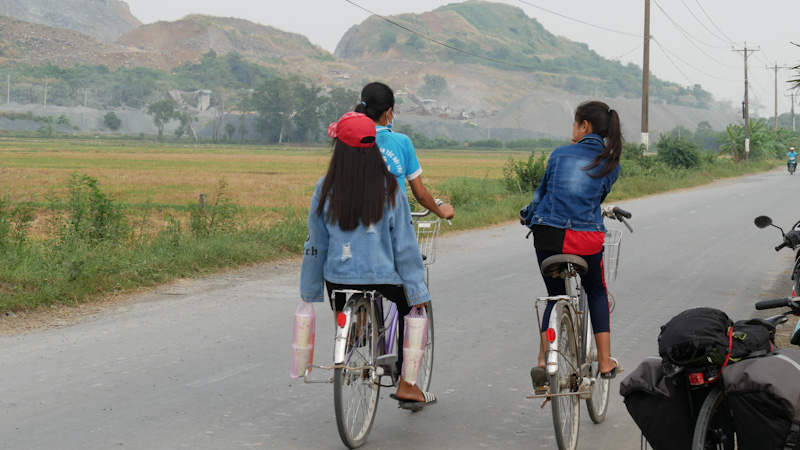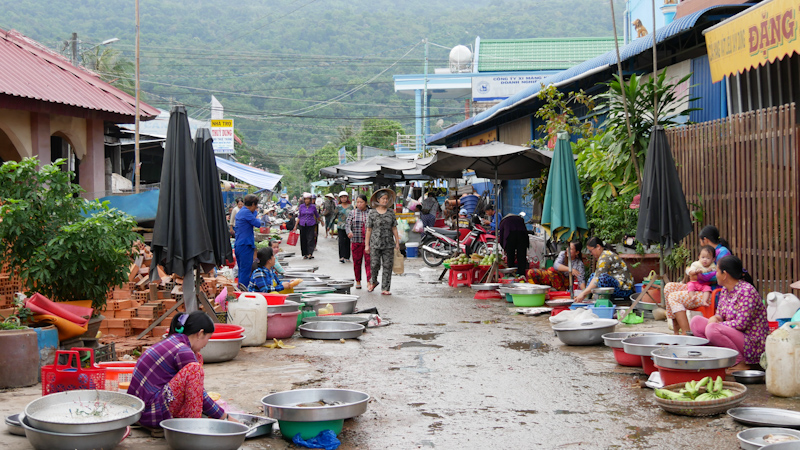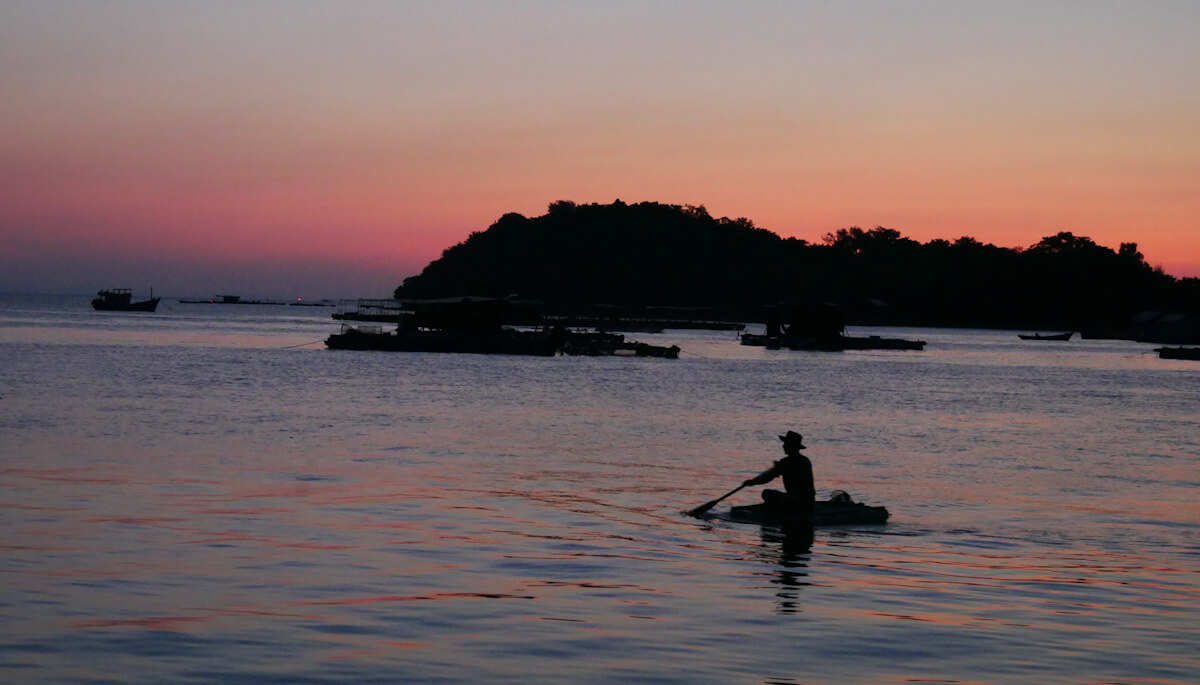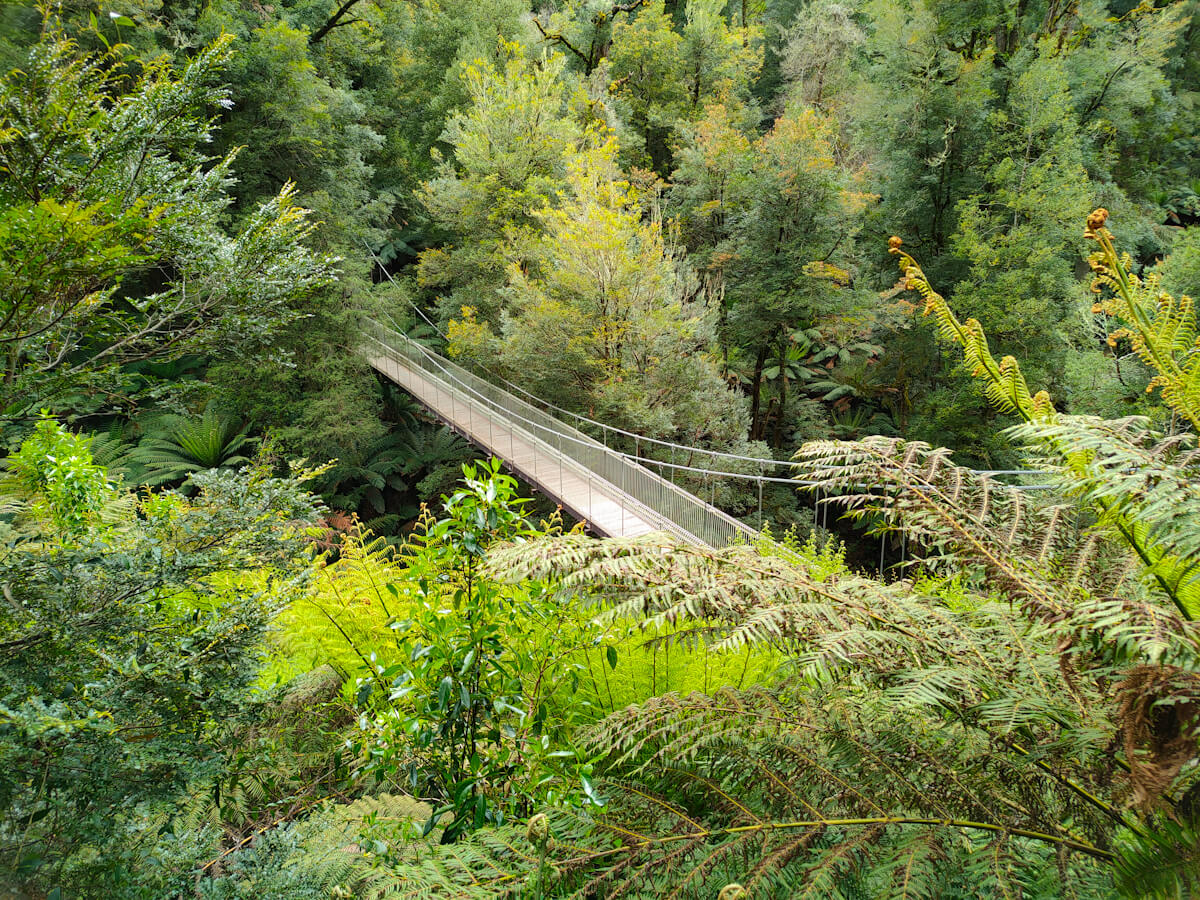Tucked cosily between two hills, this sweet little town has endearing country lanes, gorgeous temples and a tragic yet fascinating historical site.
Ignore the first impressions created by the rather chaotic main street and you’ll find it a terrific off-the-beaten-track place to stay the night. If you’re following my Mekong Delta bike tour, the town of Ba Chuc will be your very first overnight destination.
See also:
Mekong Delta bike tour day one; Ha Tien to Ba Chuc
Mekong Delta bike tour day two: Ba Chuc to Chau Doc
Map
Introduction to Ba Chuc
As a place, Ba Chuc (pronounced ‘Bah Chook’ suffers from an identity crisis: go down the broad main street, which caters for a lot of through traffic – and it feels like a non-descript town. Turn a corner on to the back streets and it is very much a rural village.
Of all the places to stay on my bike tour this is well and truly the most off-the-beaten track. It’s also one of the most unexpectedly delightful, friendly and appealing little places that make independent travel so awesome.
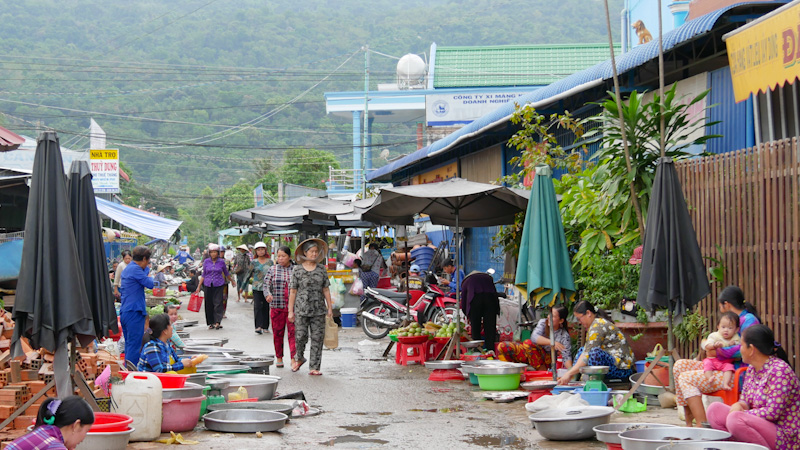
Why visit?
Amongst locals, Ba Chuc is famous for two things: its temples and a sombre point in history.
Like Ha Tien, Ba Chuc is nestled amongst a scattering of lush green hills, a landscape that inspires spirituality. There are several temples in close range, so try to make time to see at least one.
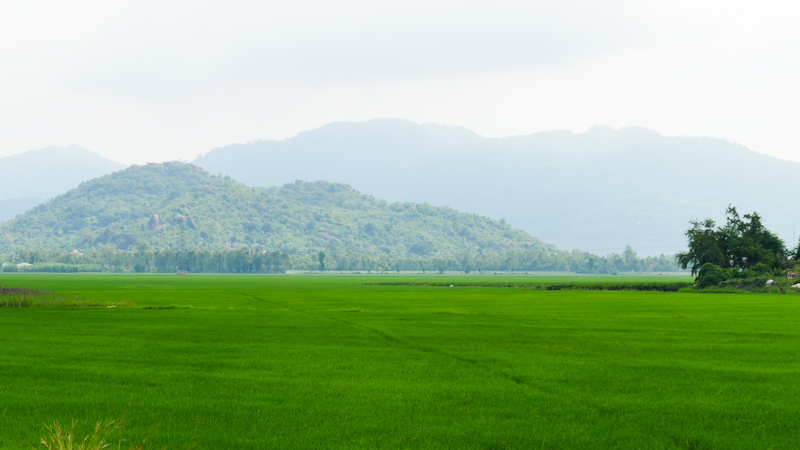
I dropped in to a few and found a few similarities: 1) they are extremely pretty and 2) the people in them like to offer you tea.
Sadly, Ba Chuc is also famous by a horrific massacre which occurred in 1978, carried out by Khmer Rouge forces who encroached on Vietnamese territory.
Accommodation
Down an ultra-laid-back country lane you’ll find Nha Nghi (guesthouse) 333 (0909 213 670), without a doubt the best and friendliest place to lay your head.
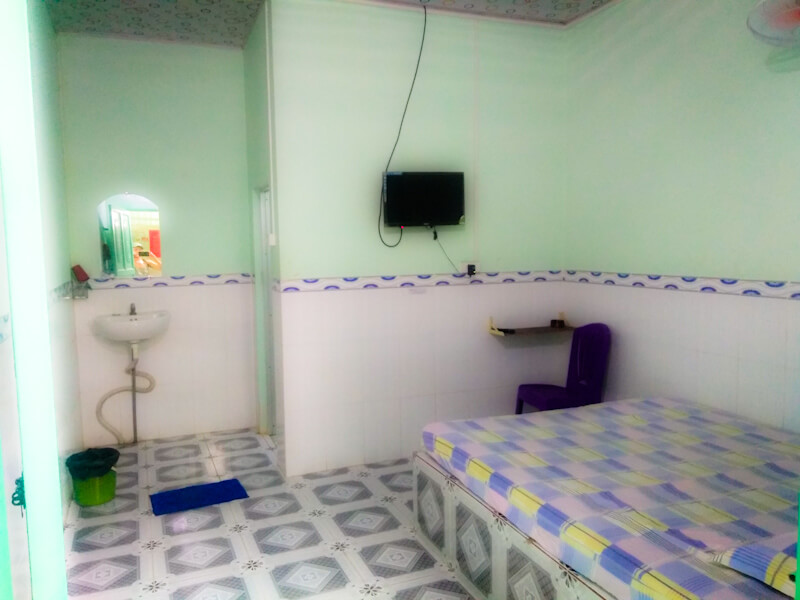
Limited English is spoken, and there is no online booking, so it may be worth getting a Vietnamese person to help you call ahead.
Nha Tro Dao Vien is a good alternative if 333 is full. It offers several OK rooms in a newish building and is registered to accept foreigners. Dao Vien is tucked away deep down a country lane but shouldn’t be too hard to find if you follow my map and look out for a sign saying ‘Nha Tro’.
Both guesthouses offer a basic standard of accommodation, though pretty acceptable in the context of a road trip.
Eating and drinking
For a small place, Ba Chuc is well-stocked with coffee shops and street food, including various snack stalls outside the market.
Tiem Com Yen Quynh is a family eatery that’s a good option for dinner. It serves up home cooked dishes on rice. Choose and point what you want.
Otherwise, towards the northern T-intersection there’s another eatery doing barbecued meats. They also have a couple of street-side tables where you can enjoy a well-earned beer.
For breakfast, you could do far worse than a bowl of noodle soup (with fish and tofu) outside Nha Nghi 333.
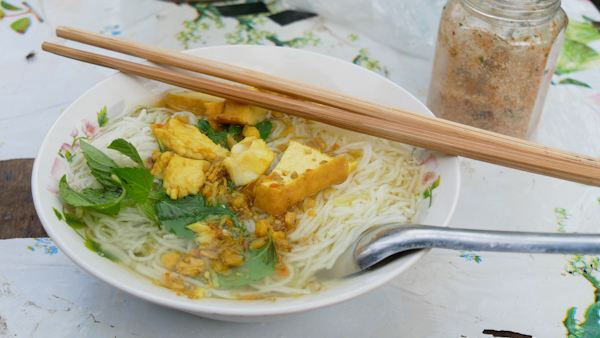
Cay Dau Coffee
A spacious and civilised place to sit and chill, with excellent wifi and good coffee. The owner speaks a little English.
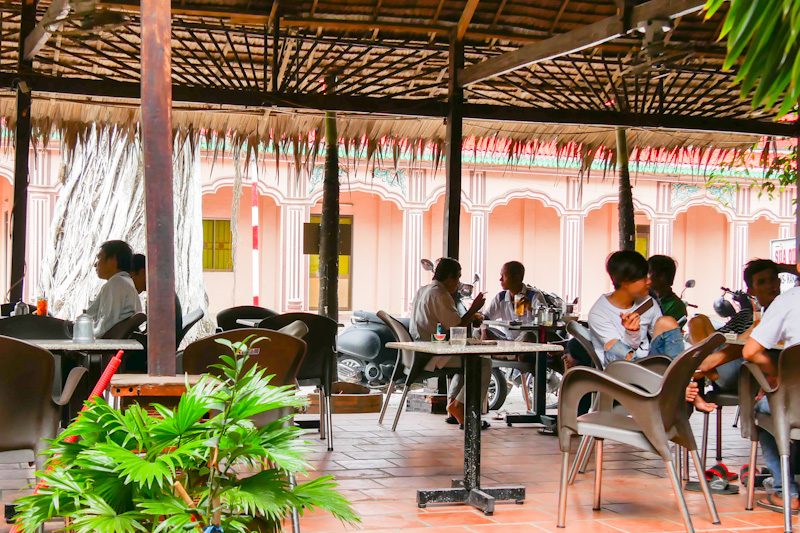
Things to do
Ba Chuc is more than just a place to stay the night: I’d recommend taking a couple of hours to wander.
Take a stroll and visit the market
Take advantage of the cool of the morning or early evening to walk around Ba Chuc’s leafy back streets. There aren’t exactly a lot of streets to get lost in, but I’ve marked a suggested walking route on the map.
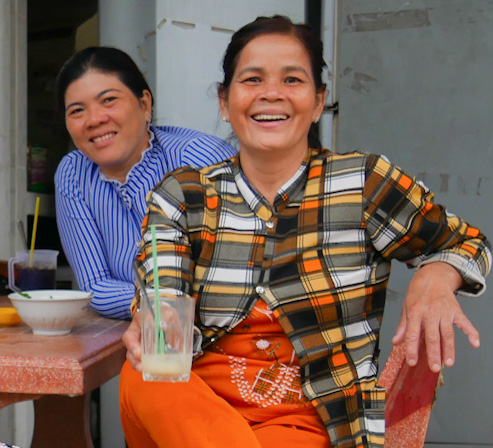
The morning market here is truly awesome: go through the formal indoor market to the rabble of vendors who line Ha Van Net streets. There are ladies from anywhere and everywhere, some literally begging me to take their photo.
Ba Chuc Memorial and Crypt
If you can, it’s well worth making time to visit the memorial. There’s not much in the way of English signage, but a visit remains a deeply moving experience.
The remains of the victims speak for themselves.
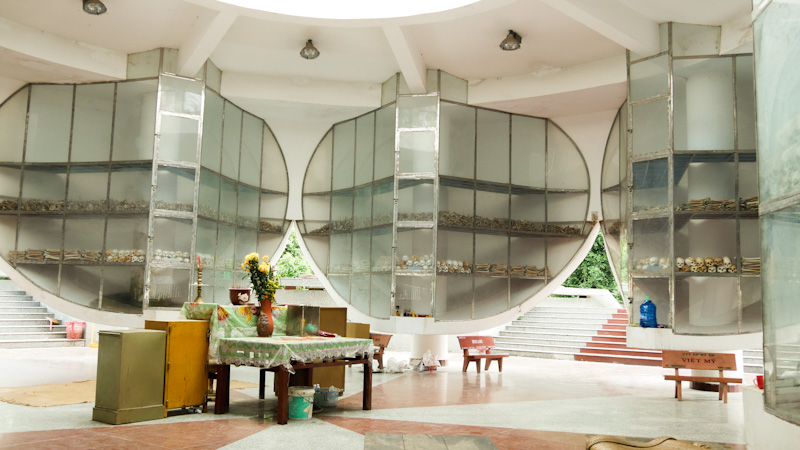
The massacre of 3157 civilians at Ba Chuc is thought to be one of the worst single atrocities committed by the Khmer Rouge – especially staggering given it is still not widely known the genocide from this dark period of history extended across the border into Vietnam.
If you’re interested to read more, there’s information here on the Lonely Planet site.
How to find the Ba Chuc memorial
Google Maps unhelpfully places this site on a non-existent back road which makes this site very difficult to find.
Access to the site in fact from the main street. There are no signs, so you need to look out for a pink concrete archway. From there, walk across an open compound until you see a circular building to your left.

Phi Lai Tu Temple
This peaceful, well-kept temple and grounds is next to the crypt. It’s a beautiful place, which makes what happened here all the more poignant. A number of villagers attempted to hide here in a crawl space behind the main shrine – none survived.
Other temples
Several temples nestle into the shade of the mountain, looking out onto the circular road which wends around the hill. Even if you only go into one, the interiors of these temples are lovingly maintained and really worth a look – it’s not hard to see why this gem of an area is so popular with local pilgrims.
Pho Da Temple
Another exceedingly attractive temple, this one is centrally located. Colourful drapes and curtains catch the light and there is a intriguing internal courtyard featuring a pool open to the sky.
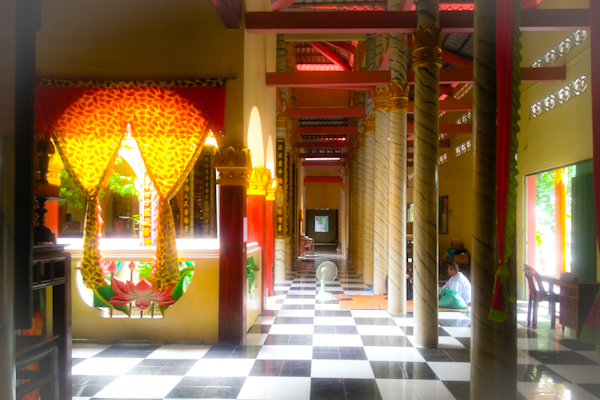
Secret valley cycling loop
If you’re lucky enough to have time on your hands, a wonderful 27-kilometre cycling loop can be made starting and ending in Ba Chuc, circling around the large mountain behind the small town.
This loop offers the possibility for a stop at the ridiculously cute Cambodian village of Xa Lon, just near the An Hoa turnoff; you’ll see the golden roof of a huge temple from afar. From An Hoa, take the turn-off at An Hoa to cycle due north along an unnamed road.
A note about staying in Tri Ton
My original plan involved staying in the town of Tri Ton, at a hotel recommended by a couple of other bloggers. On arriving I found the pollution and trucks so intense I turned around and cycled all the way back to Ba Chuc.
Riding between the towns, the transition was sudden and extreme. One minute you’re riding through ridiculously quaint and idyllic countryside, only to have an enormous stone quarry appear out of nowhere.
Of course, this kind of industry is vital for jobs and building places for people to live in, but it didn’t fit in with my plans for a relaxing bike ride.
Anyway, what I discovered (so you don’t have to) is that pollution and heavy vehicles not only make the road from An Hoa to Tri Ton a nightmare, they cast a pall over the entire city. Staying in Ba Chuc is a far nicer option.
